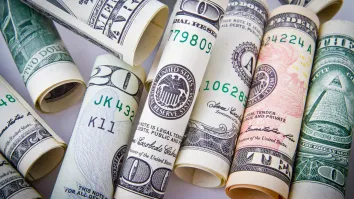Here's the impact of US government shutdown on USD
Sell-off should be limited, says analyst.
According to Kathy Lien, Managing Director of FX Strategy for BK Asset Management, unless members of Congress suddenly shift their tone and put their political differences aside, large parts of the U.S. government is poised for a shutdown at midnight.
Here's more:
We are still holding out hope that there could be a last minute compromise but at this stage the chances are extraordinarily slim. There's been absolutely no progress on the budget negotiations.
The Senate swiftly rejected the spending bill submitted by the House and they returned a version that strips out a 1 year delay to the Affordable Health Care act.
The proposal of a one-week temporary stop gap measure was also quickly rejected by Republicans who say "it doesn't make any progress in the right direction."
In other words, we are right back where we started before the weekend. At this stage, we have to consider how the U.S. dollar will react if the government is shutdown for the first time in 17 years. While the shutdown weighed on U.S. equities today, there has been only a limited sell-off in the greenback.
The dollar index lost more than 2% of its value since the beginning of September in anticipation of the dysfunction in Washington but with only a few hours to go before the October 1st deadline, the pressure on politicians to compromise will only intensify.
According to Treasury Secretary Jack Lew, the U.S. government will reach its debt limit no later than October 17th and the U.S. will effectively default on its loans for the first time ever if the debt ceiling is not increased by that date.
The U.S. government has been shutdown 17 times before but it has never defaulted on its debt. The consequence of doing so borders catastrophic and Republicans and Democrats are both keenly aware of the risks.
So even if a shutdown occurs tonight, Congress has another 16 days to compromise and we firmly believe that they will at bare minimum pass a temporary measure to fund the government for a few more months.
The last time the U.S. government was shutdown was in late 1995 early 1996 during the Clinton Administration. The government was actually shutdown twice over a one month period from November 14-19, 1995 and then from December 16, 1995 to January 6, 1996.
The dollar dropped only 0.5% while the government was shutdown and recovered quickly thereafter.
Similar price action can be seen in USD/JPY and this leads to believe that while the dollar will most likely extend its losses tomorrow if the government is shutdown, the sell-off should be limited.
Of course if a shutdown is avoided completely, the dollar should enjoy a relief rally that will mean weakness for the EUR/USD and a recovery for USD/JPY.












